Foligno is a city located in the region ofUmbria. Its history dates back to pre-Roman Umbrian times, when the ancient Umbrians probably founded it around the 10th century BC, under the name Fulginia. Later, the city began its urban evolution, and in 1255 it came under the control of the Trinci family of Lombard origin. Under their rule, Foligno extended its influence over many neighboring towns and in the 15th century, became part of the Papal States, remaining there until 1860, excluding the Napoleonic period. Through the Roman, Medieval and Renaissance eras, Foligno has retained its charm thanks to the diversity of its art and the richness of the centuries that have passed. Piazza della Repubblica, the symbol of the city and historic center, preserves important historic buildings inside, such as the Cathedral of San Feliciano, an imposing cathedral built between the 12th and 13th centuries, with a red and white facade and the burial place of Feliciano di Foligno; Palazzo Trinci, with its Renaissance frescoes and its Museums. The Pinacoteca Civica, housed in the Palazzo Trinci, has an extensive collection of artworks ranging from the Middle Ages to the Renaissance for example, while the Museum of Printing preserves the first printed copy of a page of the Divine Comedy. The city is also an important center for contemporary art, with institutions such as the Italian Center for Contemporary Art, CIAC, which promotes exhibitions and cultural events of national and international significance within its two venues. In addition to its history and culture, Foligno also offers a beautiful nature area such as the Menotre Falls and the Borgo di Rasiglia, with green hills, junipers and paths perfect for walking, hiking with friends or alone. So we at the editorial staff have collected the 10 most important and interesting places to understand its history and immerse yourself in the ancient atmosphere of Foligno. Here are what they are:
The Cathedral of St. Feliciano, built in the 12th and 13th centuries, is erected on the burial site of Bishop and martyr Feliciano of Foligno, patron saint of the City, who was martyred and buried in 251 AD. Both the main and side facades date from those centuries, later restored in the early 20th century. An inscription on the main facade also testifies that the building was built by Master Atto: however, today the cathedral features a combination of architectural styles from different eras. On the exterior of the Basilica is the 1904 mosaic above the Romanesque-style rose window depicting Christ Enthroned between St. Felicianus and Messalina, protectors of the city and depicted together with Pope Leo XIII, who commissioned the work. The interior, on the other hand, preserves both the 11th-century crypt and works from the Renaissance period such as the week chapel and the dome. The presbytery with the high altar covered by a baldachin copied from that of St. Peter’s in the Vatican is from the Baroque period with revivals in the Neoclassical period, dating back to Giuseppe Piermarini’s 18th-19th century design. The 1527 Chapel of the Sacrament by Antonio da Sangallo the Younger is among the most significant works inside the cathedral.
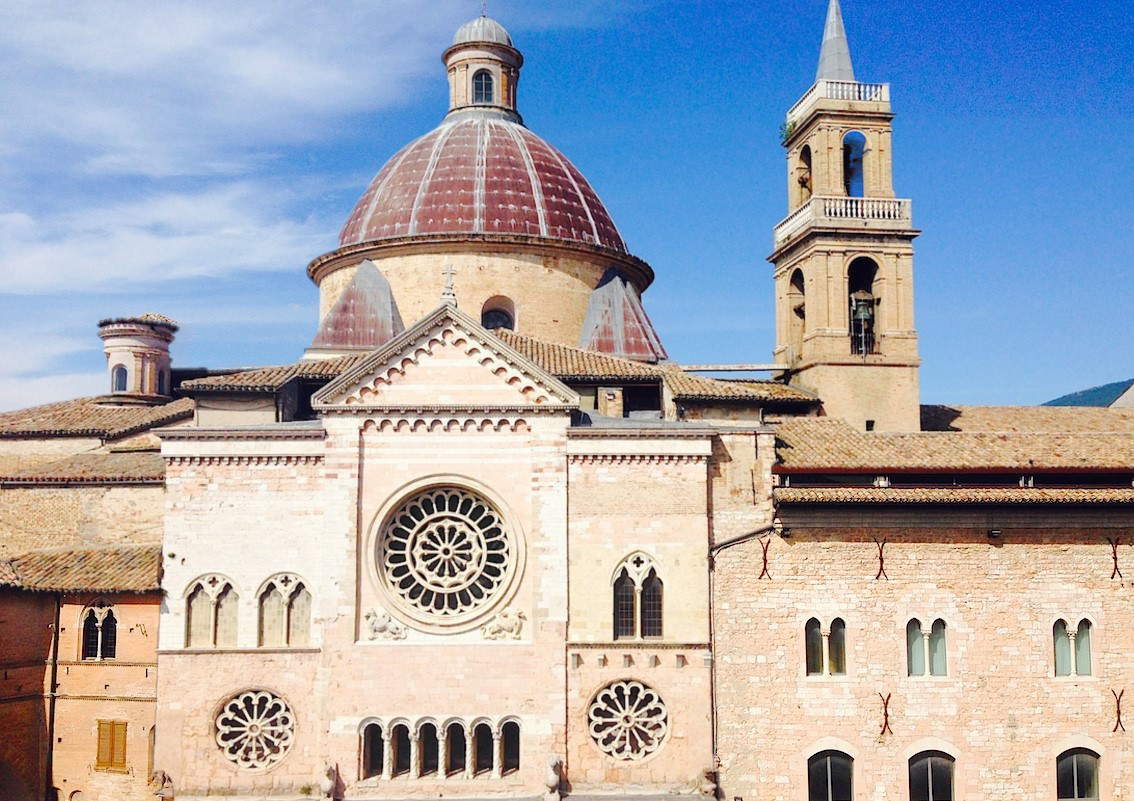
The Trinci Palace is one of the city’s most interesting monuments, and is located in Piazza della Repubblica, in the heart of Foligno. It was built by the Trinci family, who ruled the city between 1305 and 1439, and decorated with a series of frescoes by Gentile da Fabriano (Fabriano, c. 1370 - Rome, September 1427), an artist of the Italian late Gothic period, and other artists such as Ottaviano Nelli, Bartolomeo di Tommaso and Giovanni di Corraduccio. These are fundamental frescoes for understanding the humanistic and antiquarian culture of the time, among the greatest examples of 15th-century cycles still largely intact. Prominent among them are the frescoes in the Hall of Giants, the Hall of Liberal Arts and Planets, and the Loggia of Romulus and Remus. Inside, the building also houses the Civic Art Gallery, the Giuseppe Palmierini Hall, the Municipal Institution Museum, the Archaeological Museum, and the Multimedia Museum of Tournaments, Jousts and Games.
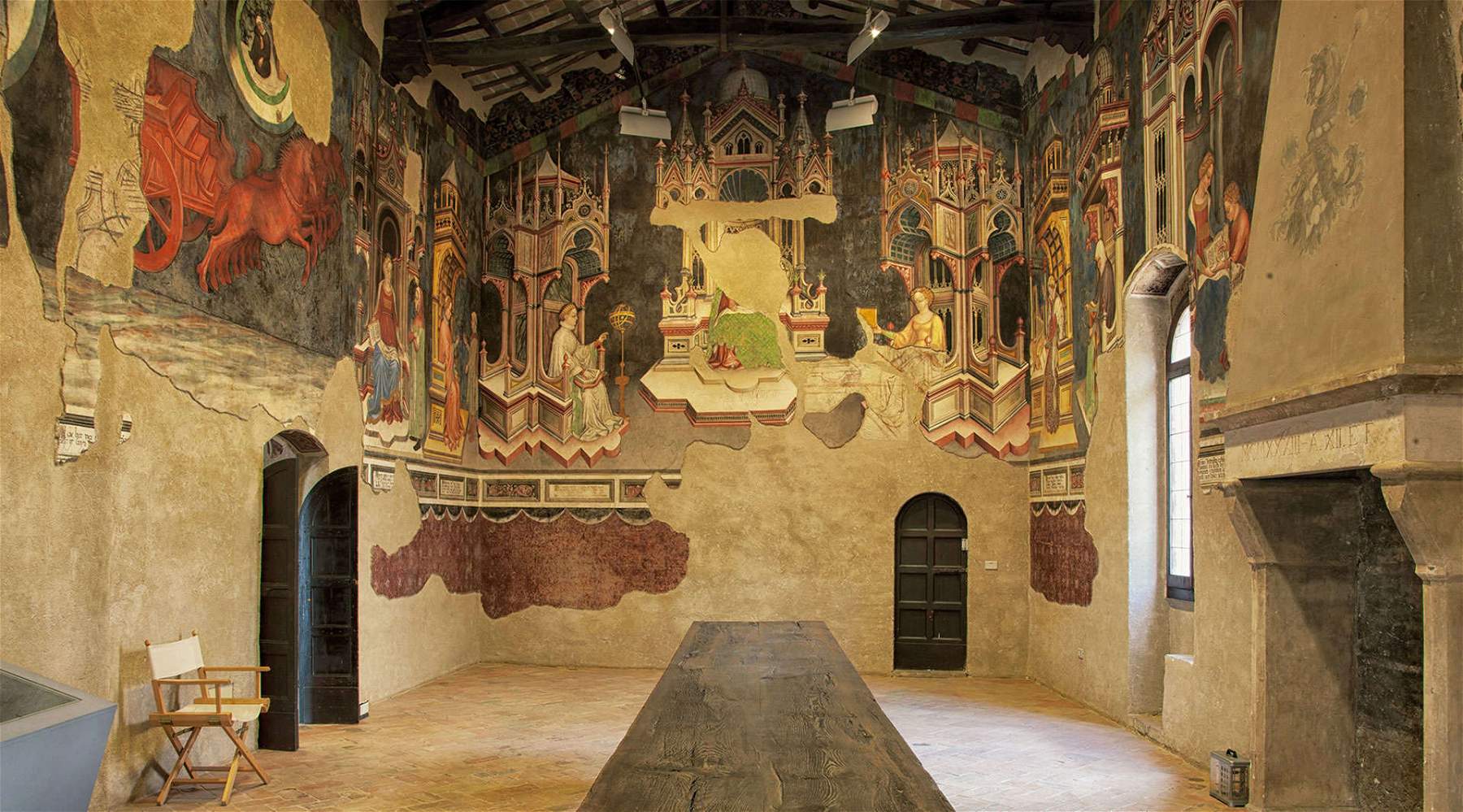
The sculpture secretly created in 1988 by Gino de Dominicis titled Cosmic Magnet and also known as the Great Skeleton, is preserved in the center of the nave of the former Church of the Holy Trinity in Annunziata, now the detached headquarters of CIAC, Centro Italiano d’Arte Contemporanea. The work depicts a large anthropomorphic skeleton with a bird’s beak in the center of its face replacing its nose and alludes to the relationship between the 24-meter colossal sculpture and cosmic space. Through the golden rod poised on the middle finger of the right hand, which represents the marking of primordial time, the sculpture creates a connection between heaven and earth, drawing the energetic vibrations of celestial bodies to earth. The work is made of polystyrene, iron and high-density fiberglass covered with silicone glues that give the work a smooth, shiny surface. In the past, Cosmic Magnet has been exhibited in several prestigious venues, such as the MAC in Grenoble, the Capodimonte Museum in Naples, the Mole Vanvitelliana in Ancona, Piazzetta Duomo in Milan, the Palace of Versailles, MAC’S Grand Hornu in Mons, Belgium, and MAXXI in Rome.
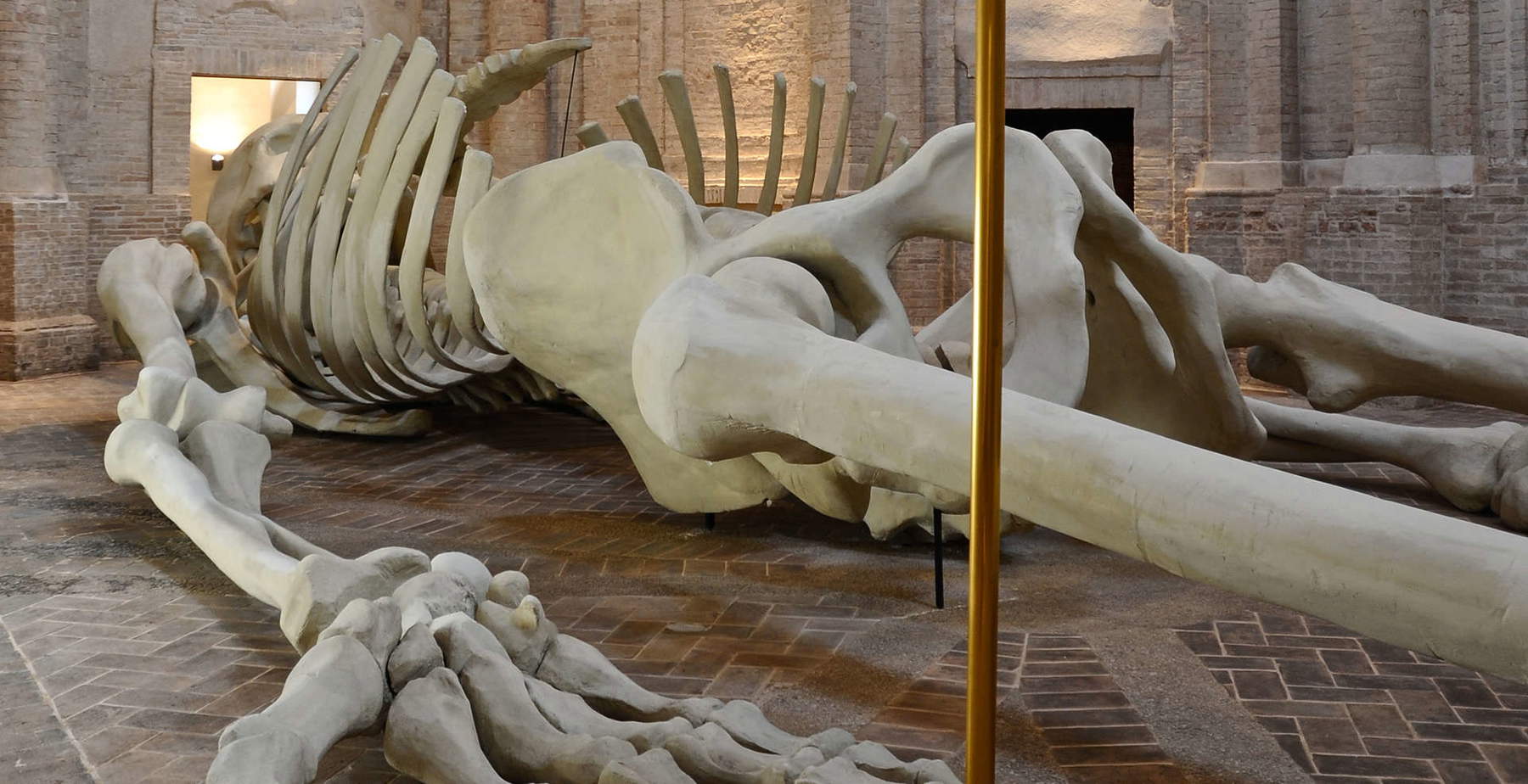
TheOratory of the Crucifix is located between the Scafati-Candiotti Palace and the San Domenico Auditorium in Foligno. In the past, the Confraternity of the Crucifix was responsible for assisting prisoners and those sentenced to death, accompanying the dead to burial, and giving lodging to pilgrims. In 1643, a wooden coffered roof painted in carved tempera was made by artists Francesco Costantini and Cristoforo Lacchi. During the seventeenth century, various artists, including Giovanni Fontana, Giuseppe Lepri, the Bolognese Giuseppe Maria Mazza for the stucco work and Giovanni Battista Michelini, and possibly also Francesco Nasini for the paintings, contributed to the expansion of the church. The building, built in three distinct phases from the late 16th to early 18th centuries, includes a single hall, a sacristy, and a bell tower on the left side. The structure can be considered an architectural example in the late Baroque style, evident from its gilded stucco decoration, ornamental motifs, and striking wall painting. In 2002 the Oratory became part of the heritage of the Municipality of Foligno.
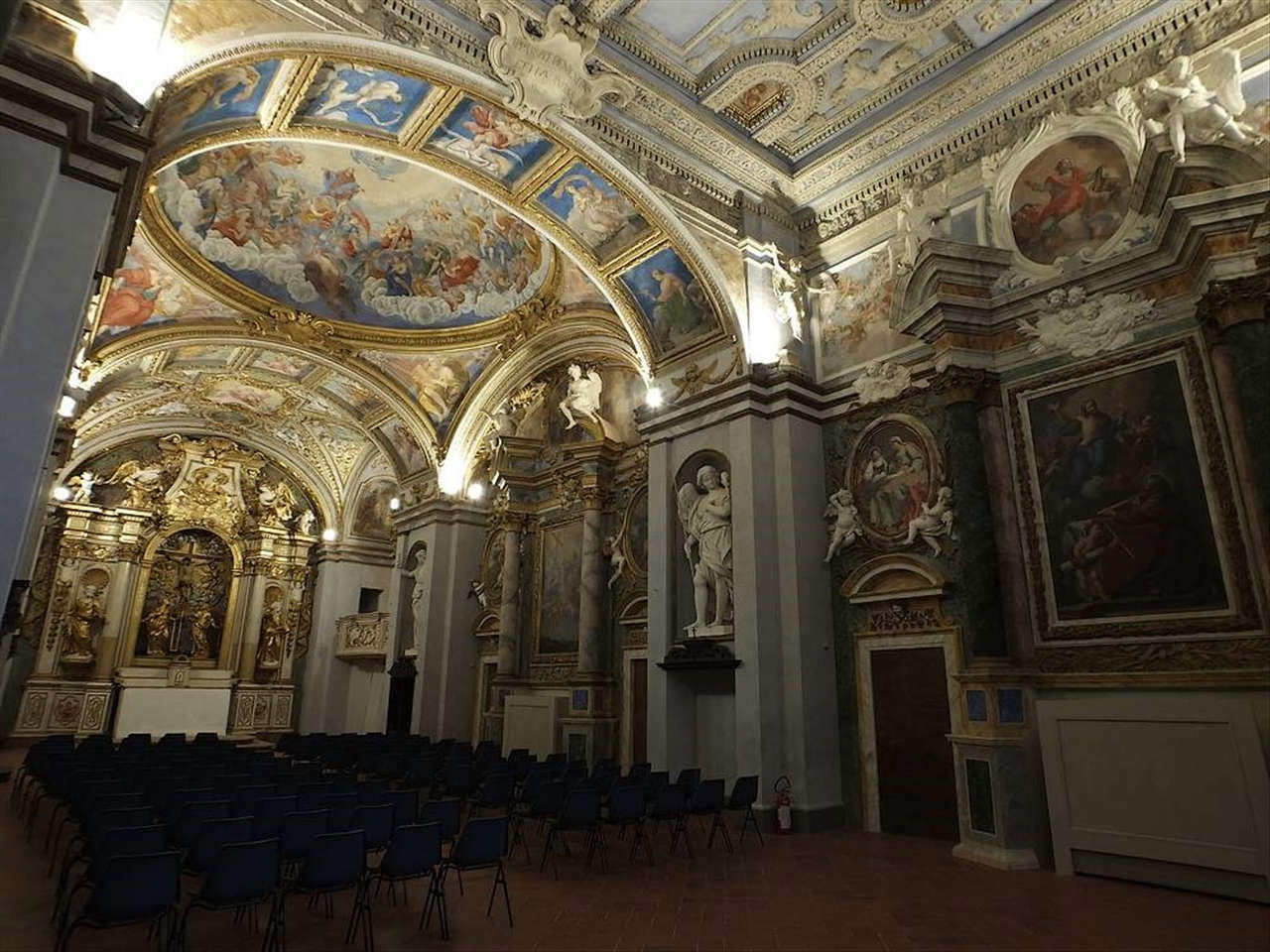
The Printing Museum is located inside Palazzo Orfini and is a testimony to paper production and publishing in Foligno from the 15th century to the present. Foligno was in fact the first Italian city to host a printing press, and the Menotre Valley area of Foligno was known, at least from the 13th century, for its many paper mills. On April 11, 1472, the first copy of the Divine Comedy was printed inside the printing press by Johannes Numeister. Of the work it is possible to admire only one page, the only one in the availability of the Museum, referring to the triplet of the 11th Canto of Paradise, dedicated to St. Francis, in which Dante describes the Umbrian territory. Inside the Museum there are also several sections devoted to paper production in Foligno: it is possible to admire, for example, the reconstruction of a 15th-century printing press; the 15th-century editions of the Orfini Numeister printing house; and an overview of lunars and almanacs, including the famous Blackbeard, first published in the mid-18th century and still widespread throughout the country. In the fully frescoed Loggia dei Trinci, on the other hand, it is possible to visit the section devoted to the printers present in the city between the 16th and 19th centuries.
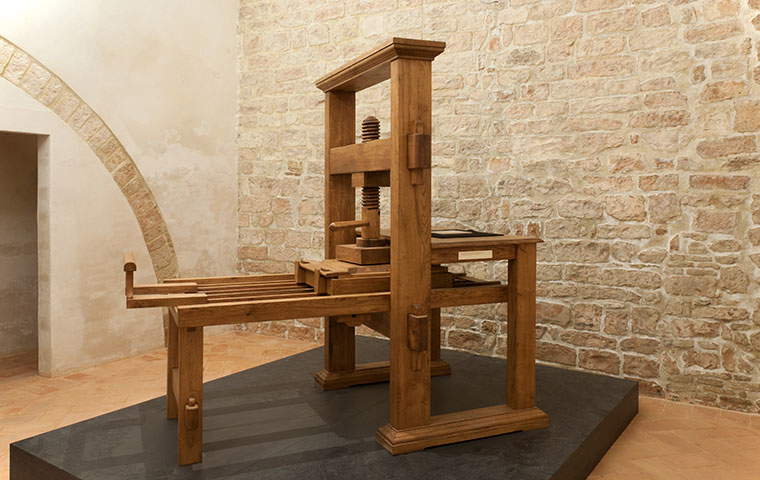
The CIAC, the Italian Center for Contemporary Art in Foligno, with permanent and nonpermanent exhibitions, is a cultural center of national and international importance and is arranged in two museum venues in the city: one iconic and contemporary, and the other carved out of the old Church of the Holy Trinity in Annunziata in which Gino de Dominicis’ work Calamita Cosmica is housed. The architecture of the first venue was the brainchild of Getulio Alviani, developed in collaboration with architect Alberto Zanmatti and then finally realized by architect Giancarlo Partenzi. The complex, on the other hand, consists of a parallelepiped clad in corten steel, which gives the exterior volumes their typical rust color. The style is distinguished by its simplicity, with light and space as protagonist elements. The museum represents the culmination of Foligno’s growing interest in contemporary art, which began in the 1960s with major exhibitions by Italian and international artists such as: Paul Jenkins, George Tatge, Gian Maria Tosatti, Ugo La Pietra, and Giuseppe Stampone.
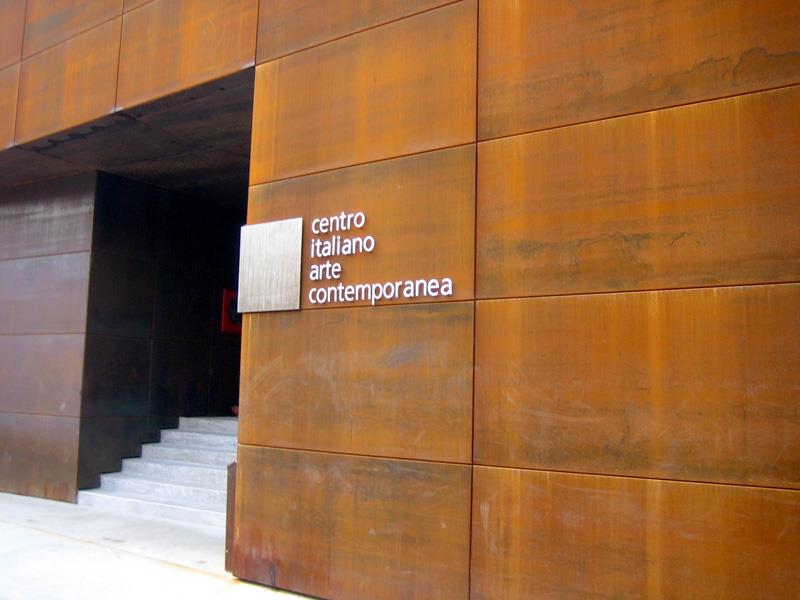
TheAbbey of Santa Croce in Sassovivo is a Benedictine complex in the territory of Foligno. Founded by Benedictine hermits in the second half of the 11th century, around 1070, over the remains of a fortified fortress belonging to the Monaldi family, the building stands among holm-oak woods wrapped in a natural landscape. Inside are fragments of frescoes from 1280, such as the image of the Virgin Enthroned with Child in her arms, monochrome frescoes from the 15th century in the Paradise Loggia, and the 16th-century fresco depicting the Last Supper. Inside the Abbey there is in addition to this the Crypt of St. Maron, a priest and monk who lived between the fourth and fifth centuries, and the Romanesque cloister by a marble worker named Pietro di Maria. In 2010,UNESCO awarded the Abbey the status of “Heritage Witness to a Culture of Peace,” recognizing it for its “vocation of peace,” to which it has remained faithful since its founding, and for the abbey’s high historical-artistic and environmental quality.
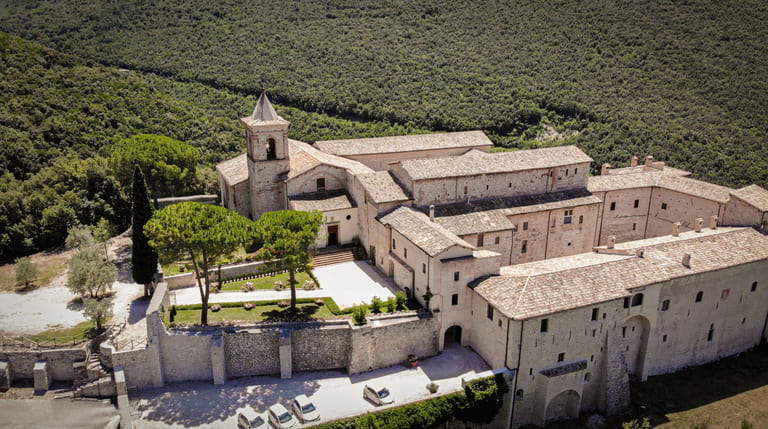
Of the Hermitage of Santa Maria diGiacobbe, there has been news since 1295, and to this day the hermitage is one of the many therapeutic sanctuaries that rise on the mountain of Foligno. The story has it that after the resurrection, St. Mary of Jacob (one of the pious women according to popular tradition) retreated to one of the caves of Sasso di Pale to embrace a life of prayer and penance. The church associated with the hermitage, built around the second half of the 13th century, is entirely frescoed. In fact, there are several paintings that characterize it: the Christ Tunicate on the left wall and the Nativity painted on the right wall are the best-known paintings, although there are other frescoes such as St. Christopher with child in arms on the entrance wall and the Holy Face of Lucca, executed before 1400 and among the most mysterious in the place. In the background, however, there is a painting of Mary of Jacob holding a jar of ointments. Unfortunately, as a result of the continuous removal of fragments of the plaster, used to prepare decoctions for healing purposes, the works on the apsidal walls are damaged. Even today, the hermitage is reached in procession on Ascension Day and May 25, when the community of Pale returns to venerate the shrine’s patron saint.
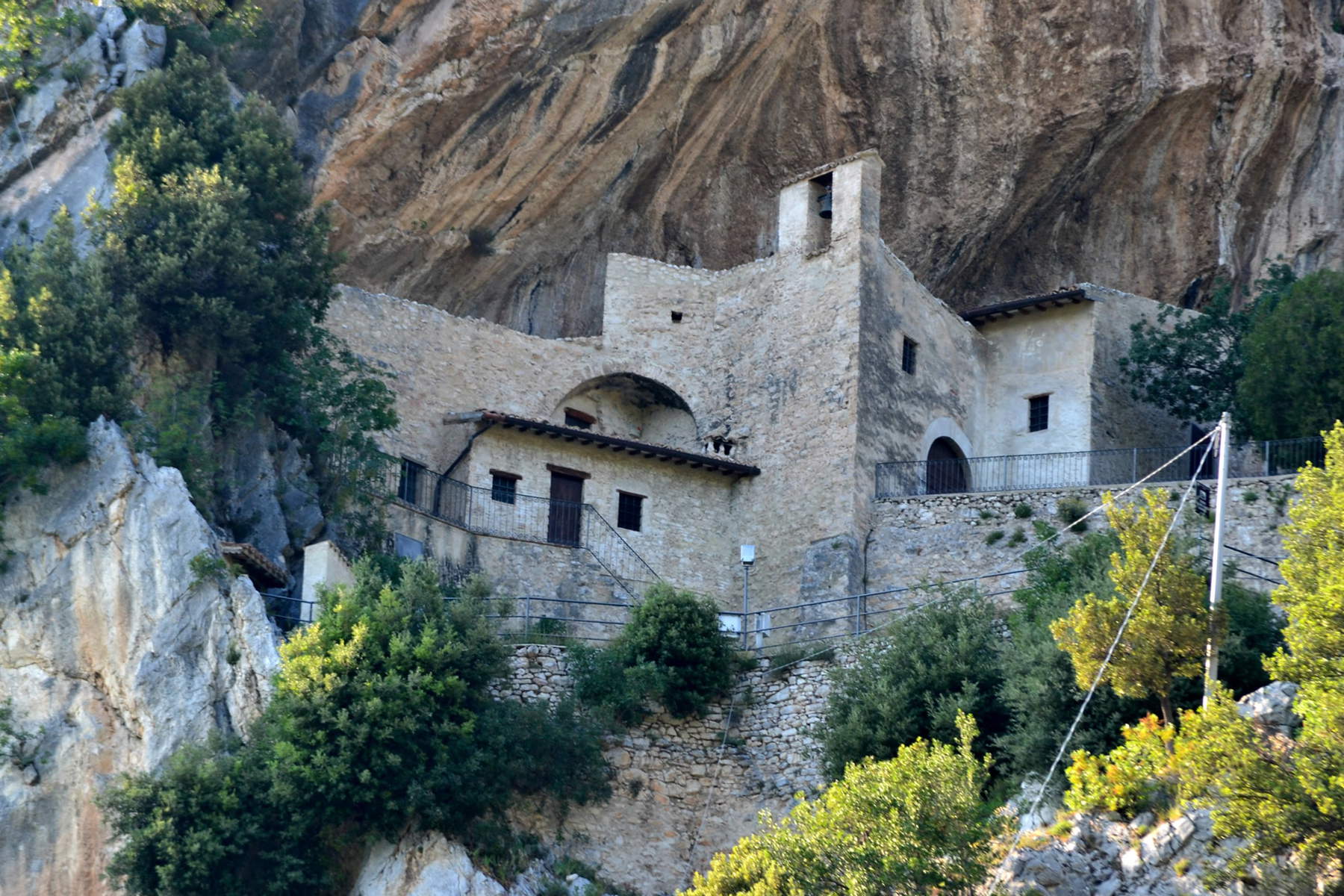
The Menotre Waterfalls are a naturalistic place enclosed between Pale and Belfiore, near Foligno, reachable by a path of about 2 km. It is a hidden oasis where the high hill Menotre River feeds a rich and fresh vegetation. At the height of Pale the river tumbles into the valley below, forming a whole series of striking waterfalls surrounded by dense vegetation. The role of the tributary (which crosses the territory for 30 km) was fundamental in past eras, when numerous important paper mills were fed by its waters. Hydraulic mills contributed until the 19th century to the printing vocation of the nearby town of Foligno. It was here, in 1472, that the first printed version of the Divine Comedy was produced, using the fine paper produced in Pale.
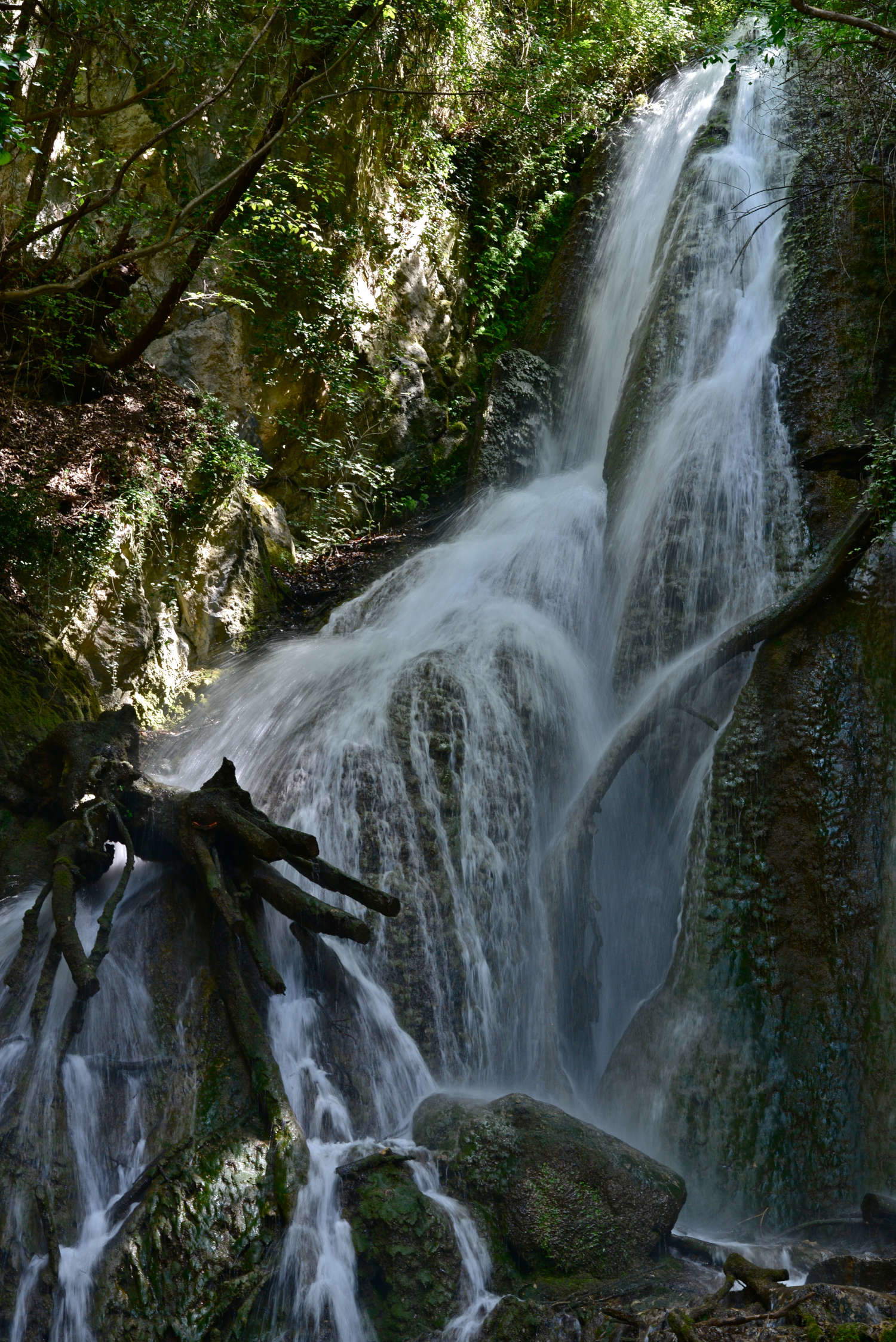
Nestled in the Menotre Valley, just 18 km from Foligno, Rasiglia was born among beech and broom forests. The origin of the small village is represented by the Capovena spring, which gushes out of the earth just upstream from the town, then distributing itself in channels that flow over the facades of the houses. Since the time of the Trinci Family in the 14th century, traces of which are preserved in the remains of the ancient fortress, Rasiglia began to distinguish itself for its mercantile activity, linked to the exploitation of water for the processing of wool and hides: tanneries, gualchiere for cloth, spinning mills and dye works were born here. Even today it is still possible to admire all the ancient tools and machinery that made up the entire textile chain: carding machines, wool-winders, wooden looms and the modern Jacquard loom, up to the hydroelectric power plant from the early 20th century, located at the foot of the spring that fed the woolen mills. Two fifteenth-century mills, the old gualchiera for cloth and the extraordinary engineering work represented by locks and canals that run through the entire hamlet are intact. Not far from the village, only 1 km away, there is also the Sanctuary of Madonna delle Grazie, surrounded by greenery and silence. The interior walls of the church are covered with frescoes of considerable artistic merit, such as the Madonna with Blessing Child, St. Christopher, and St. Anthony Abbot, belonging to 15th-century masters from Foligno.
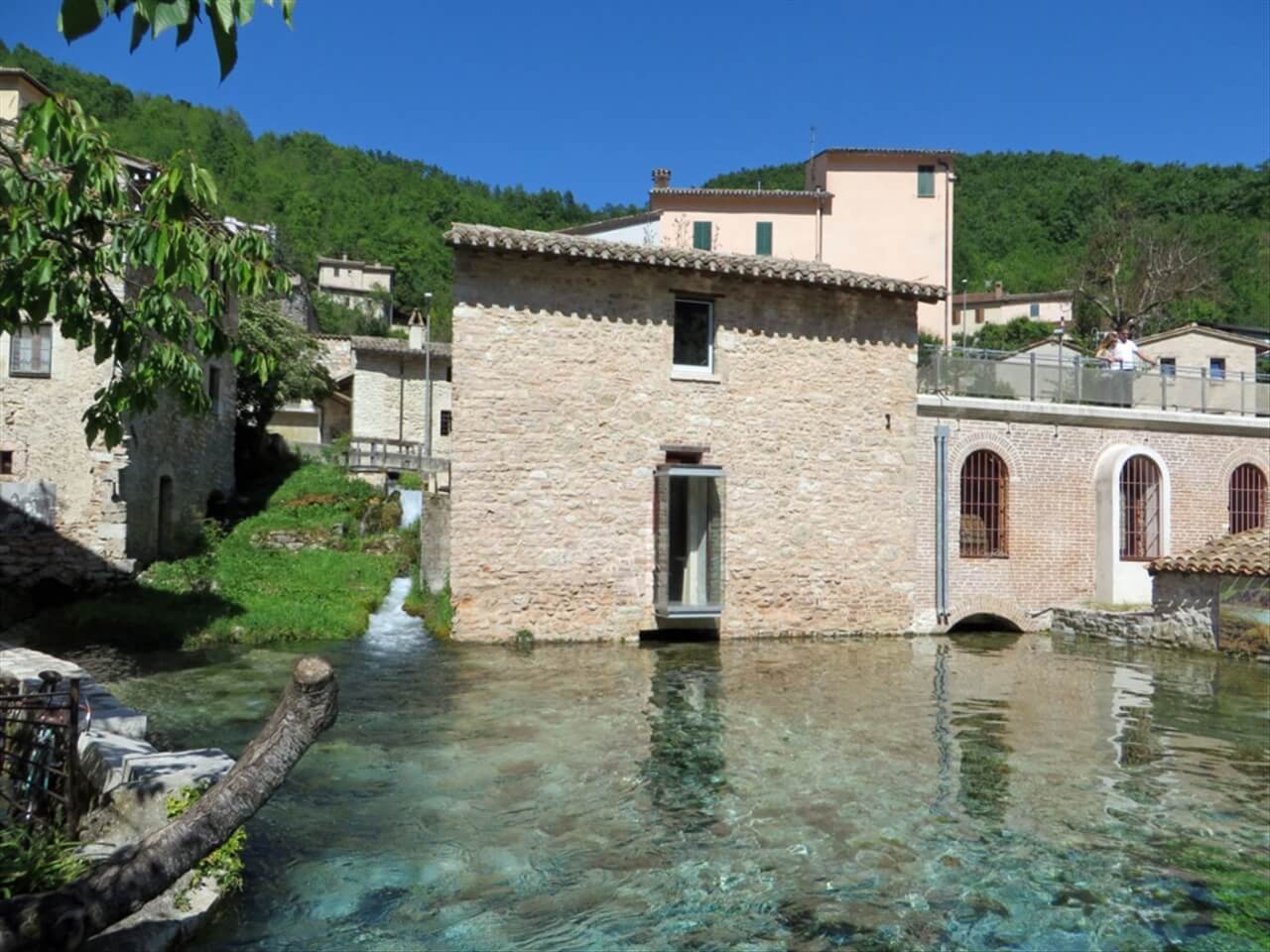
 |
| Foligno, what to see: 10 places not to miss |
Warning: the translation into English of the original Italian article was created using automatic tools. We undertake to review all articles, but we do not guarantee the total absence of inaccuracies in the translation due to the program. You can find the original by clicking on the ITA button. If you find any mistake,please contact us.